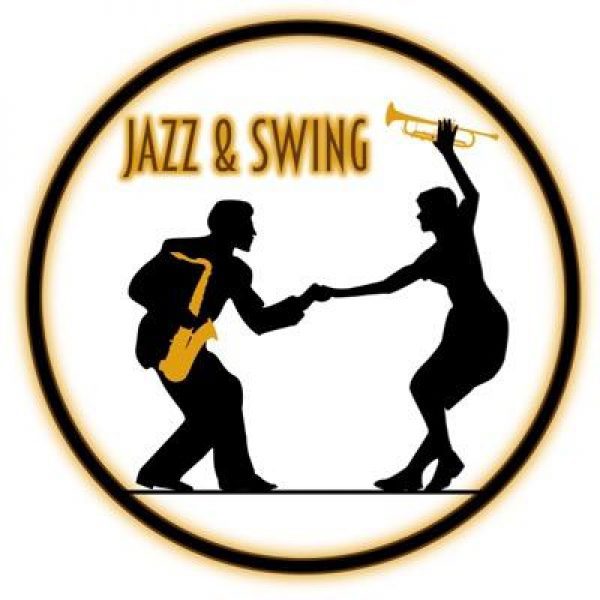Swing: Jazz Era
By Sydnei Young, Sarah Wiggins, Christal Smith, Alesha Minott, and Isoke Nelson



Origin
Swing Jazz originated in New Orleans, Louisiana between 1935 and the mid 1940s, formerly known as the Swing Era. The name swing came from the ‘swing feel’ where the emphasis is on the off–beat or weaker pulse in the music. Swing Jazz evolved out of the jazz experimentation and dance orchestra that begin in New Orleans and developed further in Kansas City, Missouri, Chicago, and New York City.Fletcher Henderson, also known as Swing, was the real initiator of Swing Jazz since the early 1930s.
Characteristics
Swing has a rhythmic style to it that is based on triplet subdivision of the beat. Swing music is played by big bands. It had a greater emphasis on written out compositions and arrangements. There are many components used in swing jazz such as Tutti (all horns playing a melodic line in harmony), Soli (one section featured playing a melodic line in harmony), Shout Chorus (climatic tutti section at the end of the arrangement), Riffs (repeated short melodic and/or rhythmic pattern), Bluesy Riffs, Call and Response Riffs (often between the horns and the rhythm section), and Solos (single person improvising – usually behind a relatively simple harmonic background). Swing Music is smooth, easy-listening and simple. Harmony: Swing uses simple chords and has a clear homophonic texture. Melody: Swing has clear, lyrical and memorable melodies. Rhythm: Swing has a solid beat with a strong dance groove. And, of course, it swung. And there were also 2 different styles of Swing music. ”Sweet” Swing (people like Glenn Miller) – had less improvisation, was a bit slower, restrained with a slight swing feel, and was for the white upper class dinner parties. “Hot” Swing (people like Duke Ellington) – was more daring, experimental, faster, with longer improvisations, stronger rhythmic drive, and a rough blues feeling.
-Reference: http://www.thejazzpianosite.com/jazz-piano-lessons/jazz-genres/swing-music-explained/
Social Implications
One of the main social implications of swing, like many other genres of music created by Black musicians, is that Black people are not given as much recognition and praise as they deserve. For example, while Charles “Buddy” Bolden is widely known as the first jazz musician, the “King of Swing” is a White man, Benny Goodman. Another social implication stemmed from the use of repetition in swing music. This characteristic made this music easy to dance to, which was not the intention.
Commodification
The Swing Era of Jazz was jazz’s most popular period. Hundreds of professional big bands flourished in the 1930’s and early 40s thousands of high school and college big bands are prevalent in today’s schools. Jazz was proliferated throughout the country via radio; in the 1930s, over 70 bands had sponsored radio shows (e.g., Let’s Dance, Camel Hit Parade, Chesterfield Hour, Coca Cola Spotlight Series, etc.) There were Countless radio shows such as Fitch Bandwagon,Coca Cola Spotlight Series,Camel Hit Parade,Chesterfield Hour,and Phillip Morris Show. Hundreds of performance venues were in performed in Ballrooms, Theatres, Movies,Hotels,and Record Companies. Ballroom performances were held in Roseland, Savoy, Cotton Club, Paradise, Blue Room, and Trianon. Theaters Paramount, Strand, Loews, English. Record Companies: Columbia (Brunswick), Decca, RCA Victor, and Vocalion. Hotel performances were held in Hotel Pennsylvania (Manhattan Room), Hotel New York (Terrace Room), Lincoln Hotel (Blue Room), Commodore Hotel (Palm Room). Some movie performances were in Hollywood Hotel,The Fabulous Dorseys,Winter Wonderland,Swing Fever, Stagedoor Canteen,Sun Valley Serenade, and Orchestra Wives. There were over 300 entries in magazine polls of billboards, Down Beat,Variety, Preview,Esquire,Metronome, and Orchestra World.
Importanat Performers
Future Influences
Swing influenced many genres such as traditional pop, jump blues, and bebop jazz.
Conclusion Opinion
Swing Jazz in a very unique style of music. The fast rhythm that makes you dance is very fun. The fact that there are two styles is very different.

